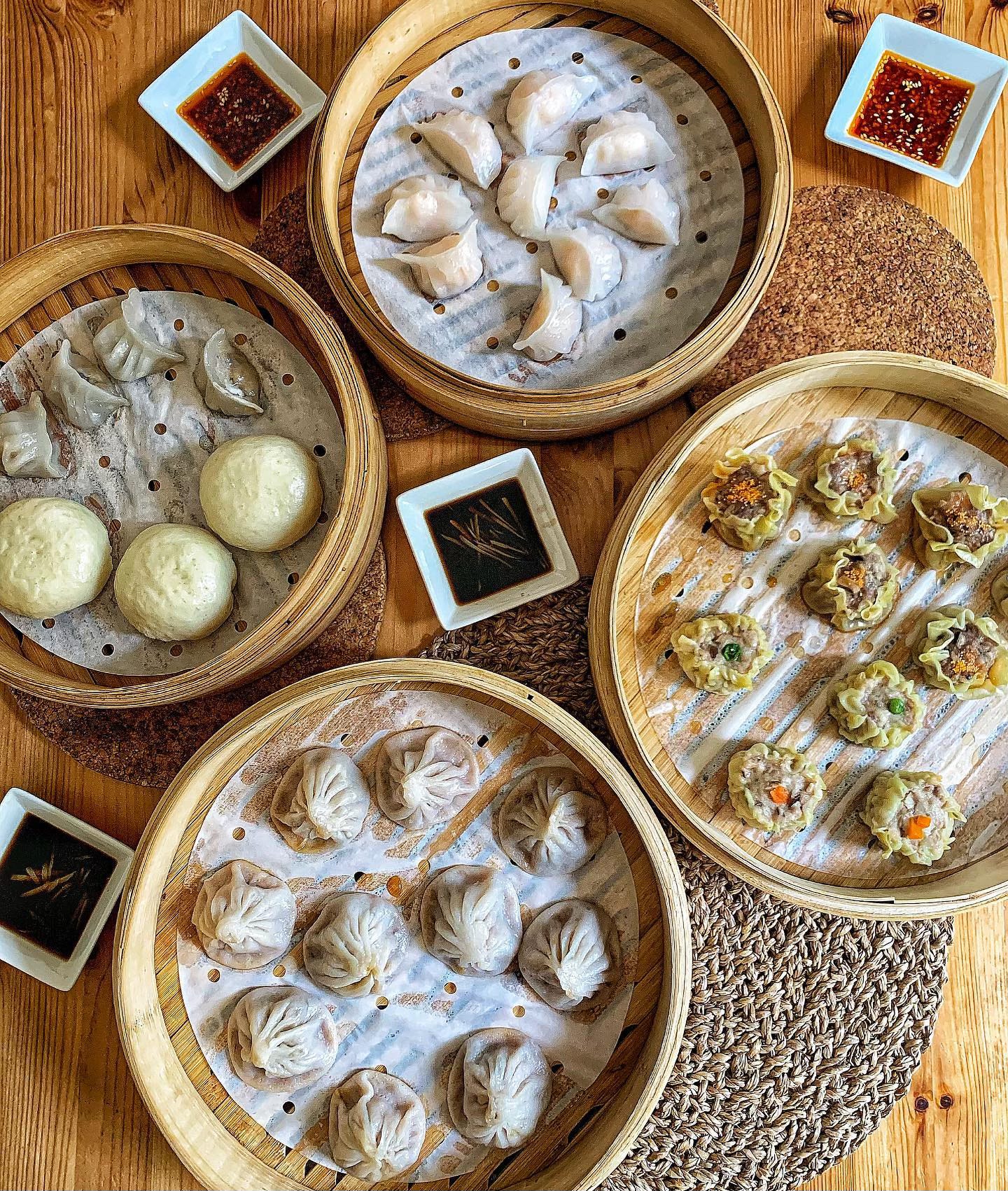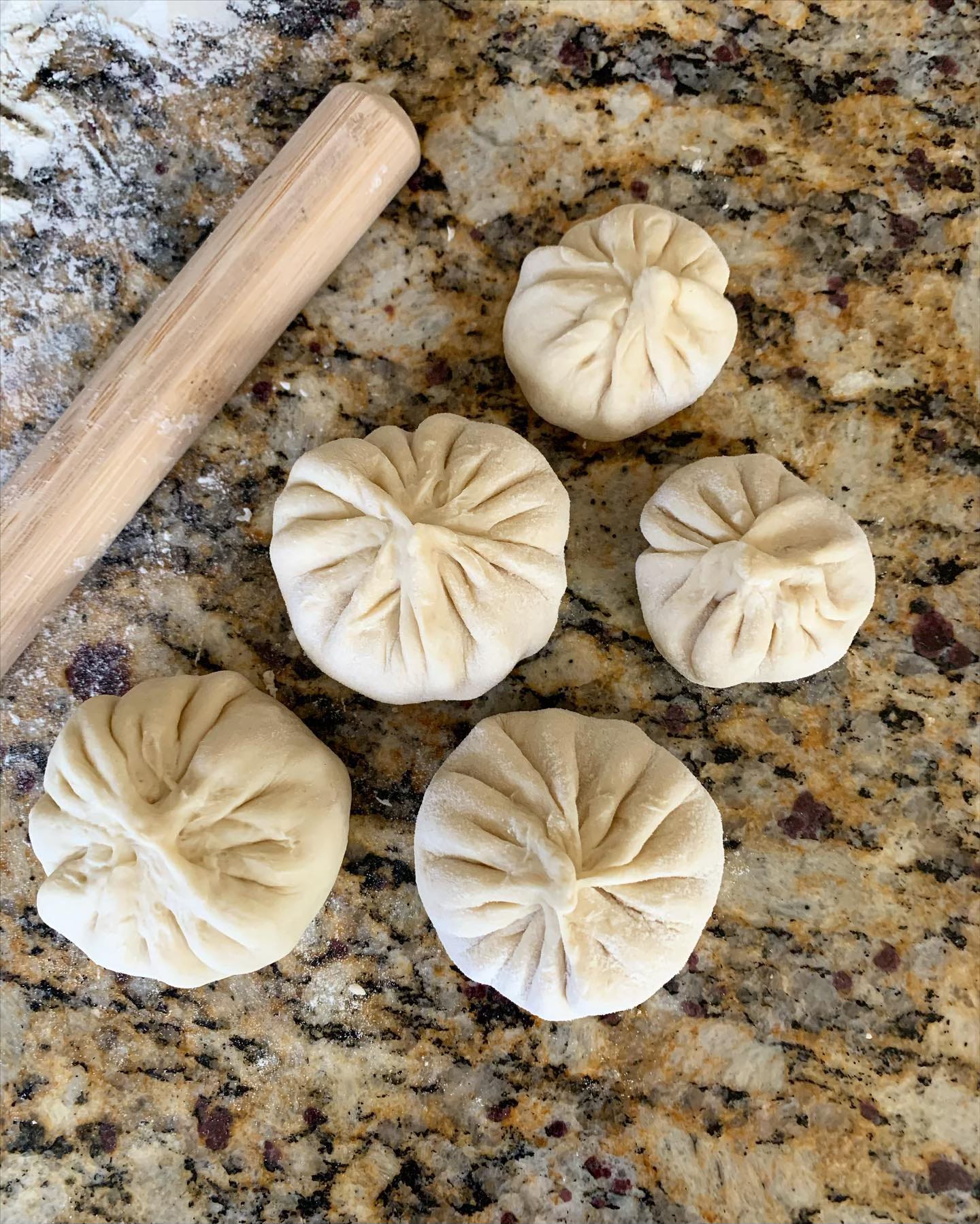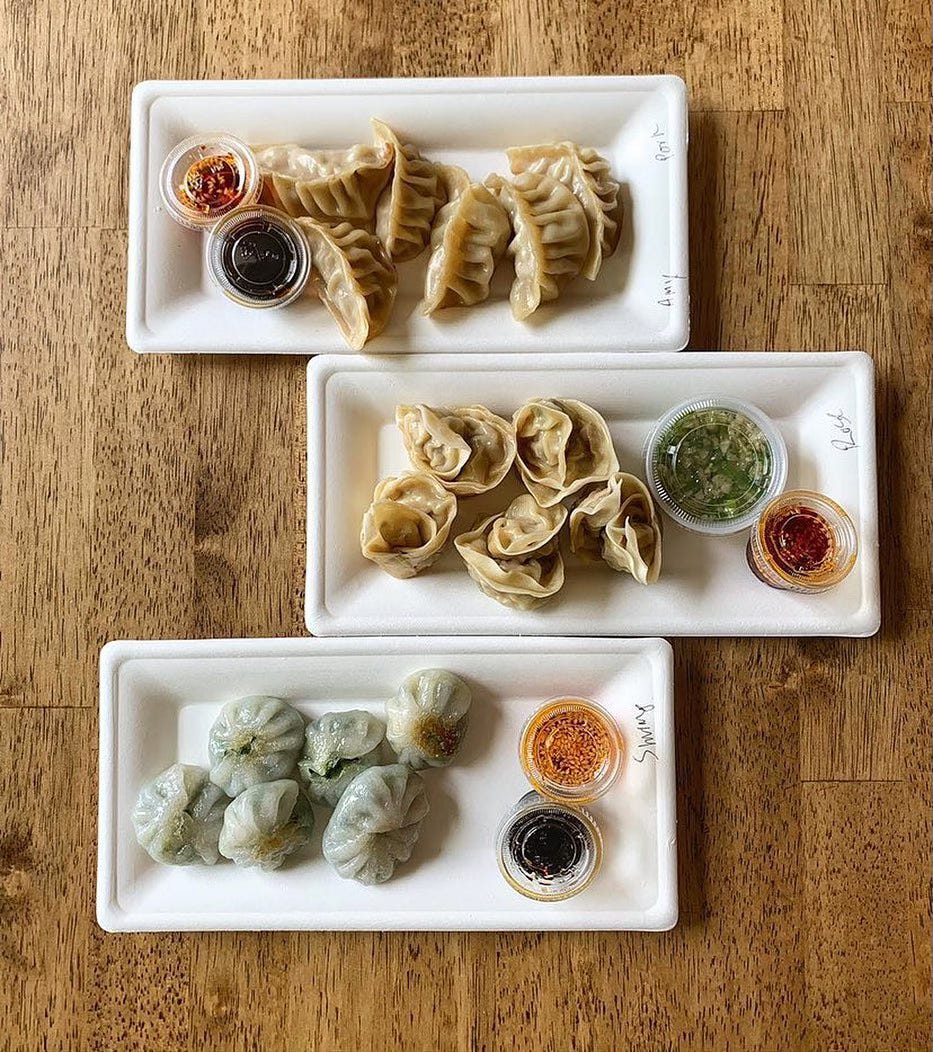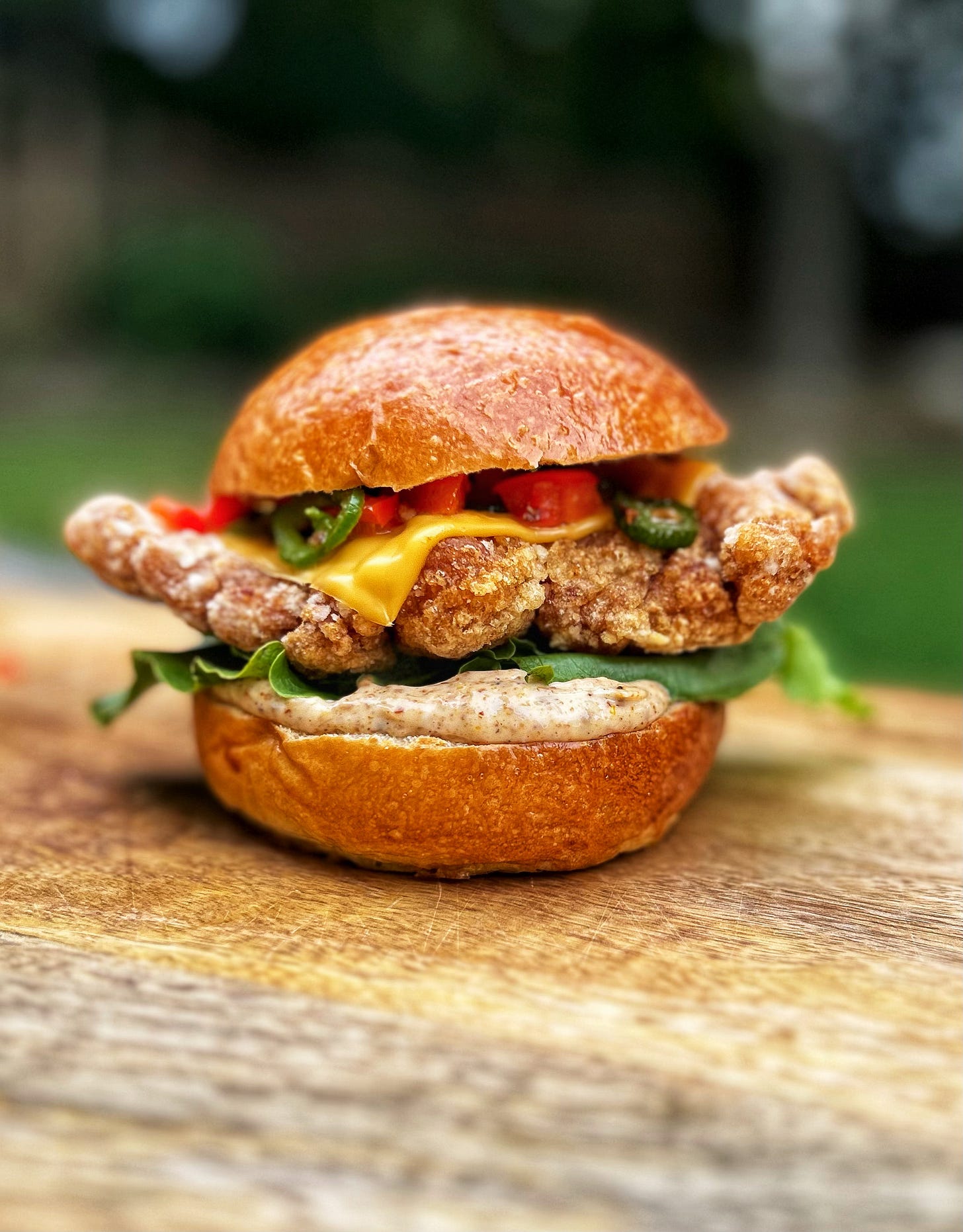I’m going to talk about the cost breakdowns of frozen dumplings and pop up dumplings, and throw in the costs of a fried chicken sandwich pop up for shits and giggles.
Frozen Dumplings.
This is the average cost to make a $1 dumpling for a frozen dumpling drop.
Ingredients: .20
Packaging/Labels: .02
Shared Kitchen rent: .35
Processing Fees: .10
____________________________
Total cost: .67 cents per dumpling
My profit: .33 cents per dumpling
33% net profit
Ingredients
Pork and cabbage potstickers are the more profitable dumplings I offer. But add higher cost ingredients like shrimp, shiitake mushrooms, fish roe, sweet rice, Chinese chives, and that profit goes down. And the prices can vary depending on inflation or other factors. My $1.99/lb. pork shoulder can go up to $2.87 in a week. Harder to source (er, Asian) ingredients vary more drastically - Chinese chive prices can fluctuate between $1.99/bunch to $7.99/bunch. Suffice to say I only make Pork and Chive Potstickers when chives go on sale.
Har Gow is the most expensive and time consuming dumpling at .28 ingredient cost, giving it a total cost of .75, with a 25% profit margin.
Packaging/Labels
This is pretty self-explanatory. The prices haven’t deviated much since I’ve started either. I did have to purchase a laser printer, and occasional ink cartridges to print those labels which I haven’t added into the cost.
Kitchen rent
Since I pay hourly to use a kitchen, I have to make my time worth it in there. Folding dumplings can be meticulous, and if you don’t have deft hands, you’re losing money.
The last time I timed myself, I was folding 225 wontons/hour, 175 potstickers/hour, and 100 hargow/hour. The times making the dough for each kind of dumpling differ and need to be factored in, as do making the fillings, and cleaning up.
“But Candy, why don’t you just make all wontons and call it a day?” Someone had asked me once. While wontons are easier and less time consuming, they sell the least compared to the other dumplings. Which is unfortunate. I have to simultaneously offer a large enough variety to keep people excited and interested, yet try to remain somewhat profitable. Hargow are wildly popular depending on the drop location - if I poured all my energy into making dozens of bags of them, they take more time to fold, take two people (so I factor in paying for labor), therefore it would be foolish to make more bags than I do each drop. If I cross that line, I start losing money.
And who the fuck just wants wontons and nothing else? Don’t take advice from people who treat your dumplings as one and the same.
“But Candy, why don’t you just make the same three varieties and keep it at that?” I tried that, and it didn’t work. After testing various menus for a certain amount of years, I need at least 5+ varieties to make it worth my time. Which is more work for me, but at least it isn’t in vain. My customers tend to drop a lot of $$ to stock up on dumplings, and buy multiple varieties each time. They also look forward to the special varieties when they are released. The average customer buys 4 bags each time, and less than 1% of my customers buy a single bag. Maybe it’s a psychological thing, but if I was a “foodie” who saw 5 varieties, with a couple new varieties each month I would choose at least 4 of them if not all 5. If there were 3 of the same varieties month after month, I would get bored and move on. People like choice.
Anyway, I am getting off track. My comfortable amount of time in the kitchen for what I can put out each drop calculates to .35 per dumpling on average.
Processing Fees
The order platform (Hotplate) + credit card processing fees, totals 10% on average. I have the option of passing these fees to my customers (both credit card processing fees and hotplate fees), but I have chosen to eat these costs. From a customer perspective, I hate seeing fees on top of fees. The majority of customers generously tip and this helps offset the cost of using a convenient and efficient platform, which I can’t find anything better for the specific business I have. If I become more tech savvy I may look for one that has a lower fee, but I haven’t found one yet. I also get troubleshooting help via text, from how to use the tools to post a specific event, to them making code for a specific thing I need, and it’s all done efficiently. I find Square to be less intuitive for drops, but use Square for pop ups.
How Much Am I Earning Per Hour for Frozen Dumplings?
This is what it ultimately comes down to, doesn’t it? Don’t get it confused with the hourly wage a McDonald’s employee gets, but *drumroll*
$14.77/hr.
Pop-Up Dumplings.
“I already know/have an idea how much you make from a pop up.”
I’ve heard this enough times and honey, you don’t know. You can estimate my gross but not my net. It’s not just the cost of my ingredients.
Let’s use 6 dumplings, at $10 per order, $1.67 each, as an example.
Ingredients: .20
Containers/plating/sauce: .05
Shared Kitchen rent: .35
Processing Fees: .07
Other costs (on average) specifically for pop ups but not frozen drops:
Temporary food service permit: $105 per pop up
House Cut: 20%
Labor (day of pop up): 2 employees at $15/hr
____________________________
Total cost: $1.19 cents per dumpling on average
My profit: .48 cents per dumpling
28.74% net profit
If I were to sell 90 orders of dumplings at a pop up, out of the $900 from that I take home $259.20.
My total hours differ from my frozen with an additional 9 hours for the pop up (driving, set up, pop up, take down, and cleanup), which equals 19 hours.
How Much Am I Earning Per Hour for pop up dumplings?
My Hourly Rate would be $13.64.
What If I Scrapped the Dumplings & Did a New Concept?
Let’s say I scrap the dumplings and just do fried chicken sandwiches or something that requires a fraction of my time in comparison to the labor intensive dumplings, just for shits and giggles.
One $12 Fried chicken sandwich - selling 100 sandwiches per pop up
Ingredients: $4.09
Hourly kitchen rent: .66 per sandwich
Containers/utensils: .22
Processing fees: .07
Other costs:
20% house cut
Temp Permit: $105
Labor on day of pop up: 2 employees at $15/hr
____________________________
$8.18 total cost of sandwich
$3.82 net profit
31.83% net profit margin
If I sold 100 fried chicken sandwiches, my gross would be $1200, and my net profit would be $382.
How Much Am I Earning Per Hour to make sandwiches?
12 hours total labor
$38.42 per hour
My profit margin is a bit higher (32% for sandwiches vs. 28% for dumplings), but the biggest difference here is my labor. I’m only working 12 hours vs. the 19 hours.
This all gives me more reason not going back into the pop up game for dumplings. I would be able to accept my profit margin if my prep time wasn’t so long. That’s what it comes down to.
Pop ups are also not restaurants. We usually don’t work 7 days a week to get those numbers, so even though they aren’t razor thin margins at 3-5%, they aren’t enough for me to actually make a living. Maybe some money to save for my kids’ college tuitions, or to supplement our income. Does this make me want to open a restaurant now? Hell no. I need to conserve the little sanity I have left here.
Everyone also has a different goal, and mine might not be within the norm. Also be careful who you take advice from, as everyone comes from a different background - er - financial status to fuck around indefinitely for the rest of their careers while some can’t. I’ve had people ask me my cost of ingredients, and brush off my other costs while giving me advice. While ingredient cost can vary depending on inflation, tariffs or whatever fucking dynamic pricing bullshit they decide to invent, just because house cuts, temporary permits, or commercial kitchen costs don’t seem to vary as much in comparison, don’t mean they don’t have an impact or influence our decisions on where we pop up. A $750 festival fee (yes that is real) would definitely put me in the red.
The ideal situation would be a symbiotic relationship where pop ups serve food and the establishment provides drinks or something else, so it’s a win-win for both. It would offset our costs as we’d help each other grow our customer bases, instead of just taking a house cut and calling it a day. If there’s anything I need to cut, it would be a venue asking for a huge cut while providing very little. Second, I would cut my employees, which I did last year (other than my kids). I won’t cut costs on ingredients or paper containers because I’m trying to be ethical in my own way. No subpar meat fillings, no styrofoam containers.
I hope my transparency is an eye opener into the sad and frustrating world of the food industry. When we talk about cooking out of love, it’s because it’s definitely not for the money (there isn’t any). This is to the customers who look at me like I scammed them, who have told me they “should’ve known better and read the description” when picking up my packs of frozen dumplings, and to the people who say “she’s charging too much at a pop up”.
This is the cost of a dumpling.







